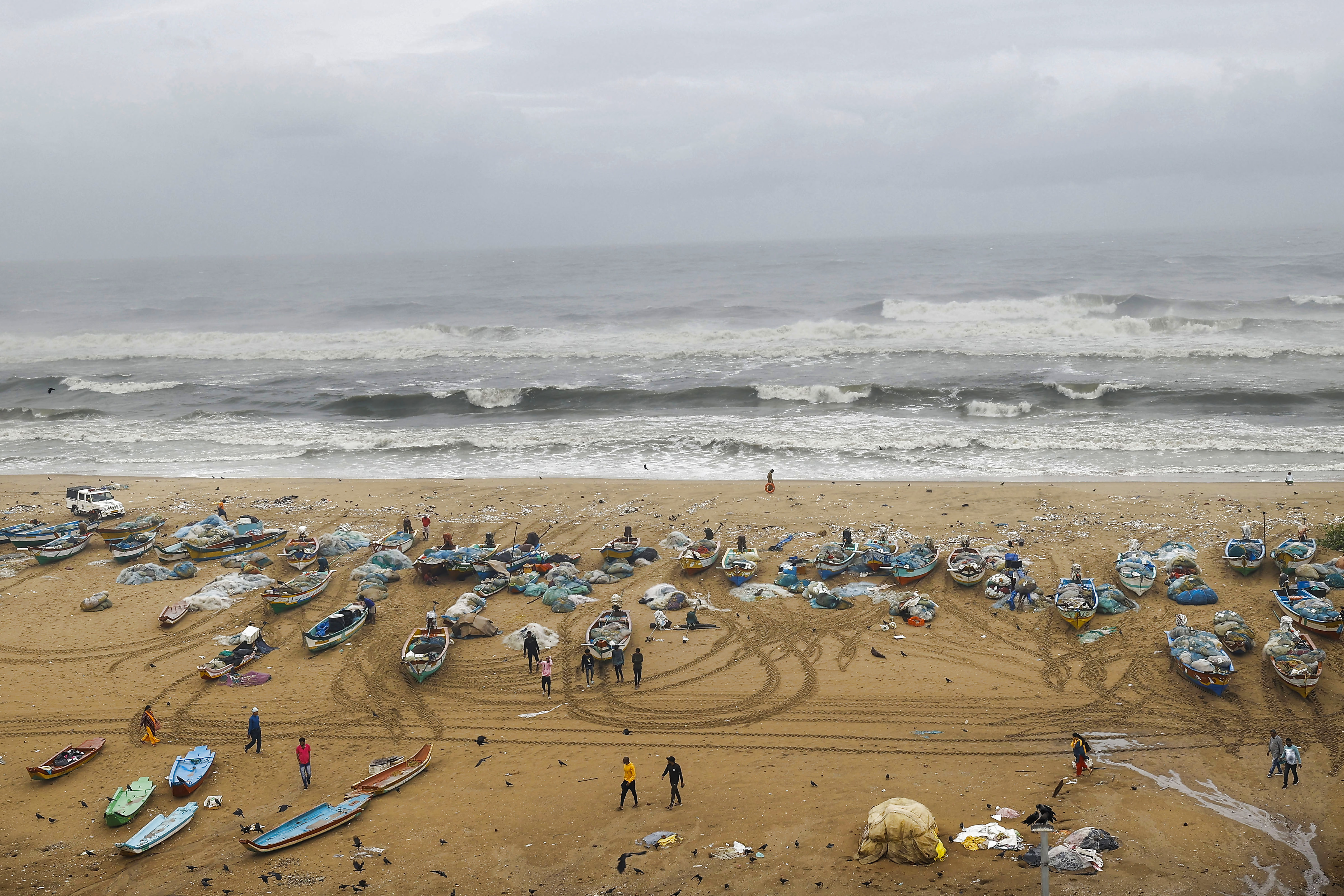
views
Severe cyclonic storm Mandous will cross the coast between north Tamil Nadu and south Andhra Pradesh around December 9 night and early next day, the regional weather office said on Friday. Parts of Tamil Nadu witnessed rains under the influence of the system in the Bay of Bengal, including here. LIVE UPDATES
A Twitter update from the India Meteorological Department said Mandous lay over 270 km east south east of Karaikal.
Heavy rainfall in Chennai today & tomorrow as cyclone Mandous further expected to move North-West direction and expected to cross Puducherry & Sriharikota by tonight or early morning: S Balachandran, Deputy Director General of Meteorology, Regional Metrology Centre pic.twitter.com/Muxclj7hQE— ANI (@ANI) December 9, 2022
It is expected to cross the coast near Mamallapuram, an IMD official said. It lay centred around 270 km off Chennai. It will weaken into a cyclonic storm in the next few hours, the IMD official added.
News18 explains what a cyclone is, and whether these are becoming more common in India and if yes, why:
What is a Cyclone?
A cyclone is a low-pressure system formed over warm water. It is essentially a system of high-speed winds rotating around a low-pressure area, with winds blowing counterclockwise in the Northern Hemisphere and clockwise in the Southern.
“Tropical cyclones are one of the most serious threats to life and property, even in their early stages of development,” according to the World Meteorological Organization. They include a variety of hazards, each of which can have a significant impact on life and property, such as storm surge, flooding, extreme winds, tornadoes, and lighting. These hazards interact with one another, significantly increasing the possibility of loss of life and material damage.
Andhra Pradesh | Heavy rain in Tirumala, Tirupati under the influence of cyclone #Mandous pic.twitter.com/zJwth9V72c— ANI (@ANI) December 9, 2022
Is Mandous Dangerous?
While educational institutes in Tamil Nadu have been closed due to heavy rainfall predictions, many weather experts have stated that Mandous will not be dangerous if all state authorities take proper precautions for heavy rains and storms.
Rough conditions are expected near the coasts of Tamil Nadu and Andhra Pradesh, with heavy rains. People have been asked to follow IMD guidelines to ensure their safety during the cyclone.

Are Cyclones More Common Now?
According to a report by Mint, review paper by Indian scientists looks into the reasons why this is happening and the role that climate change is playing. The paper, A Review Of Ocean-Atmosphere Interactions During Tropical Cyclones In The North Indian Ocean, published in the journal Earth Science Reviews provides a insight into how cyclones are becoming more frequent and more intense. The paper is written by scientists Vineet Kumar Singh and Roxy Mathew Koll, both from the Indian Institute of Tropical Meteorology-Pune (IITM), and builds on a major study the two co-wrote with other Indian scientists last year.
The latest paper analyses a variety of data, including the one that’s most important to the creation of cyclones: hotter than normal sea surface temperatures (SST). Over the past 50 years, the global ocean has absorbed 90% of the excess heat generated due to man-made climate change. This has resulted in massive ocean warming, unleashing stronger storms. And nowhere is this impact seen more clearly than in the north Indian Ocean, comprising the Arabian Sea and the Bay of Bengal, the report states.
In the Arabian Sea, SSTs have been 1.2-1.4 degree Celsius higher than normal, and in the past 20 years, there has been a 52% increase in the number of cyclones in the Arabian Sea. In the same period, the number of very severe cyclonic storms (VSCS), with wind speeds of 118-165 km per hour, has increased by a ridiculous 150% in the Arabian Sea. The paper investigates how high SSTs and other oceanic conditions in the north Indian Ocean aid the creation of powerful and destructive cyclones.
How Did Mandous Get Its Name?
The name Mandous was suggested by the UAE and was given to the storm when it was only a cyclonic circulation. Cyclone Mandous was expected to move northwest and develop into a depression over the southeast Bay of Bengal when it was named.
Read all the Latest Explainers here













Comments
0 comment